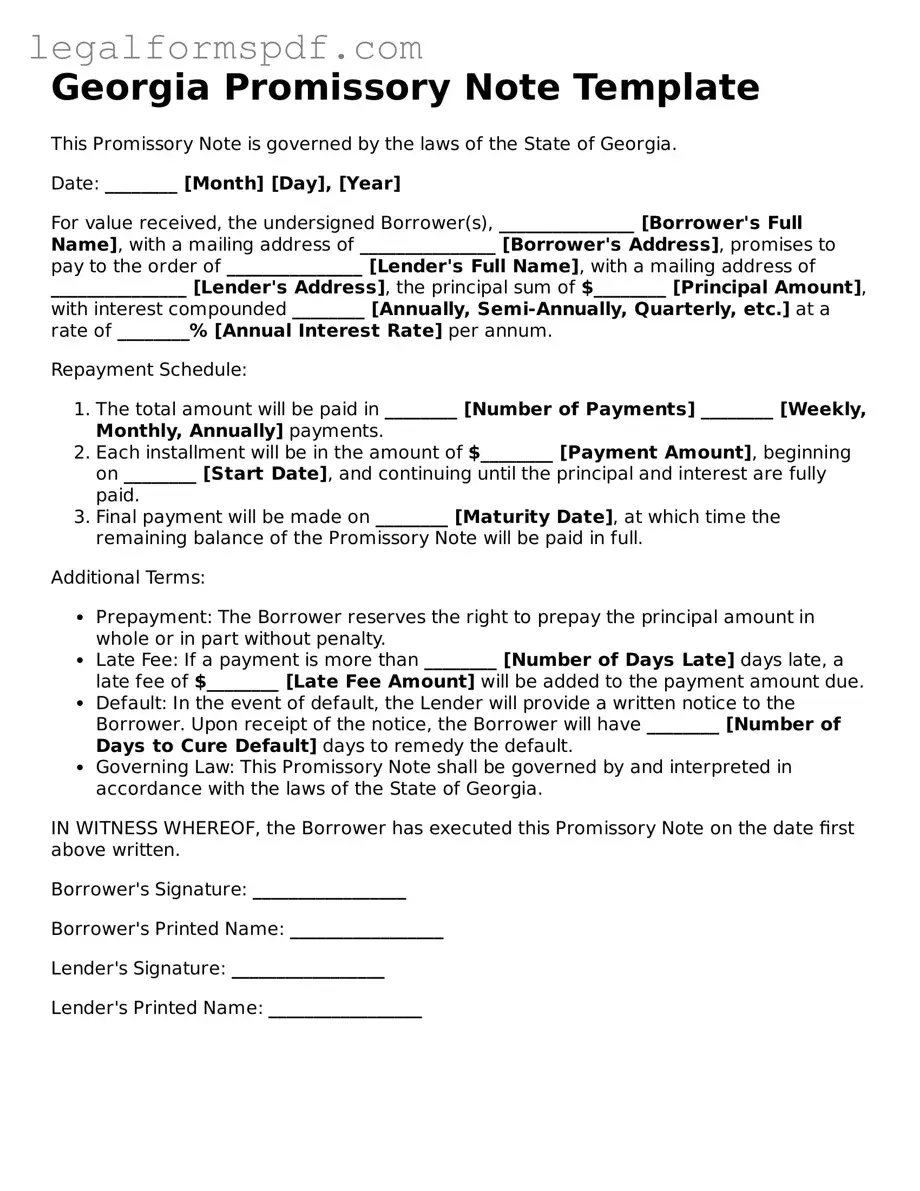The Georgia Promissory Note form shares similarities with a Loan Agreement, primarily in its function as a legally binding document dictating the terms under which money is borrowed and repaid. Both outline the amount borrowed, interest rates, repayment schedule, and actions in the case of default. However, a Loan Agreement typically encompasses more detailed provisions regarding the obligations of both parties and often includes clauses on dispute resolution, confidentiality, and securities, making it more comprehensive than a promissory note.
Similar to a Mortgage Agreement, the Georgia Promissory Note also serves as a pledge to pay a specific sum of money over time. The key distinction lies in the Mortgage Agreement's specifics; it is secured against real property as collateral. If the borrower fails to meet the payment obligations, the lender can foreclose on the property. Whereas a promissory note might not necessarily be secured, and even if it is, it could involve various types of collateral, not just real estate.
An IOU (I Owe You) is another document akin to the Georgia Promissory Note in its simplicity and acknowledgment of debt. Both serve as acknowledgments that the borrower owes money to the lender. However, an IOU is far less formal and typically lacks comprehensive details like repayment terms, interest rates, and dates, making a promissory note a more formal and legally binding document that is preferred for substantial financial transactions.
The Bill of Sale shares common ground with the Georgia Promissory Note since both can signify a transaction between two parties. A Bill of Sale proves the transfer of ownership of personal property, from the seller to the buyer, and outlines the specifics of the transaction. In contrast, a Promissory Note is an agreement to repay a debt rather than a direct transfer of ownership. Although their purposes differ, they both play crucial roles in documenting transactions between parties.
A Lease Agreement, much like the Georgia Promissory Note, is a contractual arrangement. While a Lease Agreement covers the terms and conditions under which one party agrees to rent property from another, a Promissory Note entails the specifics of a borrower repaying a lender. Both documents establish terms, conditions, and the obligations of parties involved in a binding legal framework, although they apply to different scenarios of occupancy versus borrowing.
Debt Settlement Agreements and Georgia Promissory Notes both involve the repayment of debt. A Debt Settlement Agreement is used when the borrower is unable to repay the full amount owed and the lender agrees to accept a lesser amount. The focus is on adjusting the initial terms of the debt repayment in light of financial hardship. Unlike a straightforward plan to repay as detailed in a promissory note, a settlement agreement redefines the terms to mitigate a potentially untenable financial situation for the borrower.
Lastly, the Student Loan Agreement shares key features with the Georgia Promissory Note, as it specifically pertains to borrowing money for educational purposes. Both documents delineate the amount borrowed, interest rate, repayment schedule, and the legal obligations of the borrower. However, a Student Loan Agreement often includes additional provisions relevant to educational funding, such as deferment options and grace periods post-graduation, framing it within the context of academic advancement.
